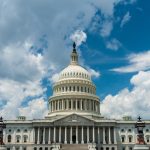Taiwan has long been recognised as a technology island by the global community; it is the leading supplier of IC designs, being next only to Silicon Valley and in the industries of optoelectronics, semiconductor, computer and mobile devices, the innovation and know-how of Taiwan companies are internationally renowned. The country holds first place as the global manufacturer of lens for mobile devices and the rapid evolvement of technology and the trend of open innovation fertilised the ground for IP development in Taiwan.
Taiwanese enterprises became rather mature with the global IP regime and with the assistance of IP professionals and authorities, such as the Intellectual Property Court being established in 2008 in response to the public’s concerns of the adjudication of IP related cases. IP activities are common and essential in order to give owners rights to their invention, know-how, and other intellectual properties. Planning, protecting, enforcing, and financialising intellectual properties have been considered and conducted on a global level, which require both knowledge and experiences of both domestic and international IP practice.
Taiwan is also a place to incubate emerging technologies with its open attitude. An example is R&D and the mass production of Tesla’s electronic cars, which cannot be done without Taiwanese enterprises’ support. Tesla also chose Taiwan as one of its pioneer markets. As an attorney practicing technology law for almost 30 years and an active member of various global professional groups such as: AIPPI, APAA, AIPLA, INTA, and ACS, Yu-Lan Kuo has witnessed the development of the IP practice in Taiwan which has integrated with, and is undoubtedly a part of the global IP practice.
How complicated can IP cases become in the ‘technology capital’ Taiwan? What approach must be taken to solve these cases?
IP cases can be very complicated. The practice of IP is an art, which needs to be shaped according to the specific clues, facts, and expectations of each and every case, and shall be supported by understanding, talent, and experiences. For example, patent prosecution sounds like a matured field of practice without much doubt, however carving the scope of a patent requires awareness and judgment. When patenting an invention, making the scope of patent claims too broad would increase the risk of invalidity, while making the scope of claims too narrow may render it useless. Each step of prosecuting and enforcing a patent is delicate and calls for skilled IP professionals. For example, when asserting a patent against infringers, there may be lots of obstacles on the way, such as lack of evidence, or difficulties to verify the infringement. Samples of infringing products may be located in a place you have no access to, or you may not even find one sample in the market because the product is tailor-made and only manufactured according to specific purchase orders issued. As to infringement of software IP, comparison of the right owner’s software and the accused infringing product may be extremely difficult.
Another example is trademark practice. On the Internet, trademark infringement can be done easily and trademark prosecution planning and strategy may change. Although most of trademark practice in most jurisdictions are open to new type of trademarks, such as colours, smells, shapes, holograms, and others, defining the scope protected by a specific trademark could be a problem. For colours, do you rely on colour charts? For smells and shapes, how do you draw the line of infringement? These are challenges which need creative solutions based on the accumulation of IP cases. Clients, authorities and we IP professionals, always learn a lot from cooperation and cases we handle and fight for, or fight against. IP practice is dynamic and approaches are also become dynamic via open minds.
Can you tell us how IP legislation developed and changed as technology advanced in Taiwan? What do you recall being the biggest change in the legal sector regarding IP?
Set the IP Court being established in 2008 and the IP Case Adjudication Act in 2008 aside, the biggest change of IP legislation should be the decriminalisation of patent infringement in 2003. Before 2003, because there wasn’t any US-styled discovery available in Taiwan, collection of infringement evidence was very difficult, thus the right owners tended to opt for police raids, searches and seizure of criminal complaints, for the purpose of locating and collecting patent infringement evidence. Under the pressure of criminal sanctions, many patent disputes were resolved without going over a civil patent litigation. This means patent disputes very often missed the chance to be reviewed from a proper perspective. The so-called “IP practice” at that time focused on “criminal case practice” rather than real patent duel.
After the decriminalisation of patent infringement, patent disputes go back to civil track. The decriminalisation changed the game, allowing the parties to argue real patent issues in the court, which changed the whole patent practice thereon.
How has issuing preliminary injunctions for intellectual properties improved the litigation process for your clients?
Before the establishment of IP Court in 2008 and the then-promulgated IP Case Adjudication Act, the practice of preliminary injunction (PI) is very different from what it is today. In the past, Taiwan traditionally being a civil law jurisdiction, there was no requirement of likelihood of success, among others. Comparing with the common law system, Taiwanese court did not conduct a substantial review of a PI application. One of the reasons is that the law did not require so, and because courts did not have the capability to understand technical issues. At that time, PI could be granted between two days to two weeks without substantial review, as long as the applicant deposited sufficient bonds. This was misleading foreign customers as they were unaware that the grant of a PI did not serve as the assurance of the validity of rights asserted and the likelihood of success.
The IP Court and the IP Case Adjudication Act changed the requirements of PI application, making it clear that the court must review the likelihood of success, the likelihood of irreparable harm, the necessity, and the balance of public interests. When reviewing the likelihood of success, validity of rights asserted and possibilities of infringement must be considered.
From a neutral standpoint, the evolvement of IP case adjudication is good for both the right owner and the defendant. However, in the beginning years of IP Court, the practice of PI became too conservative. In comparison to other courts, the IP Court is very efficient and can be viewed as a rocket docket. The new practice requires the court to excessively review, and since the first instance of an IP case can be completed within several months to one year, this made PI unattractive. Many clients gave up its plan for PI application but went for IP litigation directly.
The PI practice in the IP Court was gradually tuned to an ideal status. Now the IP Court is willing to issue an urgent disposition (a temporary PI) within 24 hours from receiving a PI application, and can issue a PI in two to three weeks after several hearings allowing both parties to express opinions for the court’s substantial review. This encourages right owners and at the same time protects the defendants, making Taiwan more friendly environment for IP and technology law practice.
With Taiwan’s enterprises being open to emerging technologies, are there any challenges you face as a practising lawyer to embrace cases with out-of-the-ordinary technology?
Experiences teach us when embracing emerging technologies, we must ponder what the impacts of such technologies are, so that we can truly understand what challenges we would face. For example, when nanotechnology arose, it changes features of substances. Many materials change its characteristic in nano scale. Laws and regulations face challenges because we were unfamiliar with nanotechnology, which influence our evaluation of safety, features protected by patents, and others. After the regulation issues are resolved, for example, after the IP professionals understand how to deal with patent examination of applications related to nanotechnology, then there are not too many differences when judges review disputes that go into the court.
Take GMO (genetically modified organism) as another example. The challenges the emerging GM technologies faced mostly stayed in the level of regulation and policy, not IP issues, and they barely become cases sent to the court. Cryptocurrency is another example, as it involves legal issues related to regulations and business.
Fintech is also an example of emerging technologies that change the industry. The key to Fintech is the application of big data through algorithm, which changes the banking and financing industry and basically involves regulation issues, for it is not digitalizing current banking practice, but creating a whole new world of possibilities and new business models. It also calls for rethinking of existing laws and regulations.
The last example, but not the least, is Uber. Uber stirred up governments and industries around the world. In Taiwan, there are lots of debates and many cases sent to the court arising out of the wrestling between Uber and local government and competitors.
We practicing lawyers are meant to respond to these questions. We use currently available tools to achieve client’s goals, for example, successfully having patents granted for related inventions. For new, out-of-the-ordinary fields, we learn the ropes and guide clients and even governmental authorities in the mists.
With Taiwan having global influence, what difficulties do you face regarding international IP practices?
It would be issues arising out of legal systems. Taiwan is a jurisdiction with a civil law system. We do not have US-styled discovery, which makes it difficult for a party to collect evidence. We do not have expert witnesses, which makes it difficult for specialised knowledge of certain technologies, skills and professionals to be presented in the court. We do not have the design of US-styled “full-trial”, which makes the trial of a case intermittent.
Comparing to other civil law jurisdictions, the abovementioned features should not be a problem, for the systems are similar. For common law system jurisdictions, the abovementioned differences may create a gap for parties from different jurisdictions to understand each other. This does not mean a civil law system is better or inferior to a common law system, as they both have pros and cons.
As to the practice of the Intellectual Property Office, Taiwanese practice is very similar to other practices. There is no huge gap in this perspective.
What changes do you predict to take place in the IP Court in Taiwan as technology continues to evolve?
Before the establishment of IP Court in 2008, there are four “bugs” in the IP litigation practice in Taiwan: dual-track, lack of professionalism, dependence of verification institute, and stay of litigation procedure. Aiming to solve these problems, the IP Court and the IP Case Adjudication Act were born. The operation of IP Court and the IP case adjudication can be understood as “full trial by separating disputes issues”. This is not the same as the full trial adopted in the common law system, such as the US, but can be viewed as a “mini” full trial when the IP Court review each disputed issue, such as the validity issue, the infringement issue, and the damage issue. Because of the senior judges and senior technology examiners assisting the judges, the IP Court now has the ability to review complicated technological issues, and the IP court judges are more and more experienced with IP practice.
As technologies continue to evolve, the role know-how and trade secret play become crucial. At the time the IP Court was established, the focus of the IP Court practice was patent litigation. The design for know-how litigation has not been thought of thoroughly, though there still are tools to protect know-how and trade secrets, for example protective orders are available for IP litigation.
As technologies continue to evolve, the need for a more delicate adjudication model for trade secret litigation became obvious, including the need for procedural solutions. For example, in patent litigation, very often the calculation of damage becomes a problem, which is even more difficult in trade secret misappropriation cases. For example, although the parties would try to introduce experts into IP litigation by submitting written opinions of experts as evidence, there is no expert witness officially adopted by the procedural laws. In the future, it can be expected that the need to introduce experts, including technical experts, forensic accounting experts, among others, into IP litigation would increase greatly. This is the change and challenge the IP Court must face as a result of development and creation of new technologies.
Besides, a main part of the development and evolvement of technologies and industries recently stem from big data and the master algorithm, for example, Fintech. In the short term the influence of this kind of innovation would stay in the level of policy and regulation, but in the long run related disputes will go into the court. Whether or not the existing IP regime can deal with these challenges, and whether or not the IP Court has the capacity to deal with these challenges, would be an issue worth watching.
Can you recommend key actions technological companies must take when protecting their invention?
The first step should be documentation. Information needs to be recorded and documented (including in electronic format, of course). Every invention comes from an idea. Ideas, when expressed, becomes information. There is a lot to be considered to transform information to intangible assets. The first step is that you need to know what information you have. There needs to be records and documents for you to further evaluate and develop it.
Secondly, classification. Information, after being recorded, needs to be classified. Especially for proprietary and confidential information, you need to secure the confidentiality.
Third, evaluation. Evaluate your information for purpose of analysis and portfolio so as to enable management.
All of the above are based on strategy. Strategy, of course, is related to your business plan. More importantly, strategy reflects and is influenced by a company’s philosophy of management. Philosophy of management is related to your ambition, your value, your faith, your characteristic, your plan and your perspective; there are a lot differences between a long-term plan and a short-term plan. I can talk for another three hours if we go into details of these factors but to make it short, if you would like to condense the above mentioned as key actions tech companies should take when protecting their invention, I would recommend key actions for making information intangible assets, which are documentation, classification, and proper measures to secure confidentiality of information, so as to make information qualified as trade secret and know-how protected by law. Another key action, when taking these actions, is to go back to your strategy and philosophy to consider and to fine-tune each step of yours.
How has this changed from when you first began practising?
The above are experiences gained and were accumulated by practicing. There are a lot of details you can work on. I did not have all the clues and tools or even the big picture when I first began practicing. When I started to practice technology law 30 years ago, the industries in Taiwan just grew up from their kindergarten-stage, and the Taiwanese community had only limited knowledge of IP. Besides, the IP practice then in the global community had not yet matured. At the stage of exploring, most companies and IP professionals focused only on a segment of IP, for example, setting up patent and trademark offices and focusing on patent prosecution and trademark prosecution. Lawyers at that time did not have sufficient understanding of IP, so that most opinions rendered by IP lawyers lacked the insight of the whole picture, which we already have nowadays.
By the accumulation of cases and amendments of laws and regulations, Taiwan no longer is a teenager in the IP field, rather it became matured and grew to an international level. In the recent years, when small and medium enterprises (SMEs) came to us seeking legal advice, the knowledge and insight they have are no inferior than what was possessed by the big enterprises like IBM who assisted Taiwan to set up its IP regime 30 years ago. The reform of laws and regulations, also contributed to the evolvement of IP environment in Taiwan. For example, the IP Court established and operated since July 2008 and the new IP Case Adjudication Act opened a new page of Taiwan’s IP practice. This only happened when the politics and economy grew to a certain level. If you ask how has this changed, I would say it is a steady process - though sometimes it leaps - by the accumulation of cases and law reforms.








